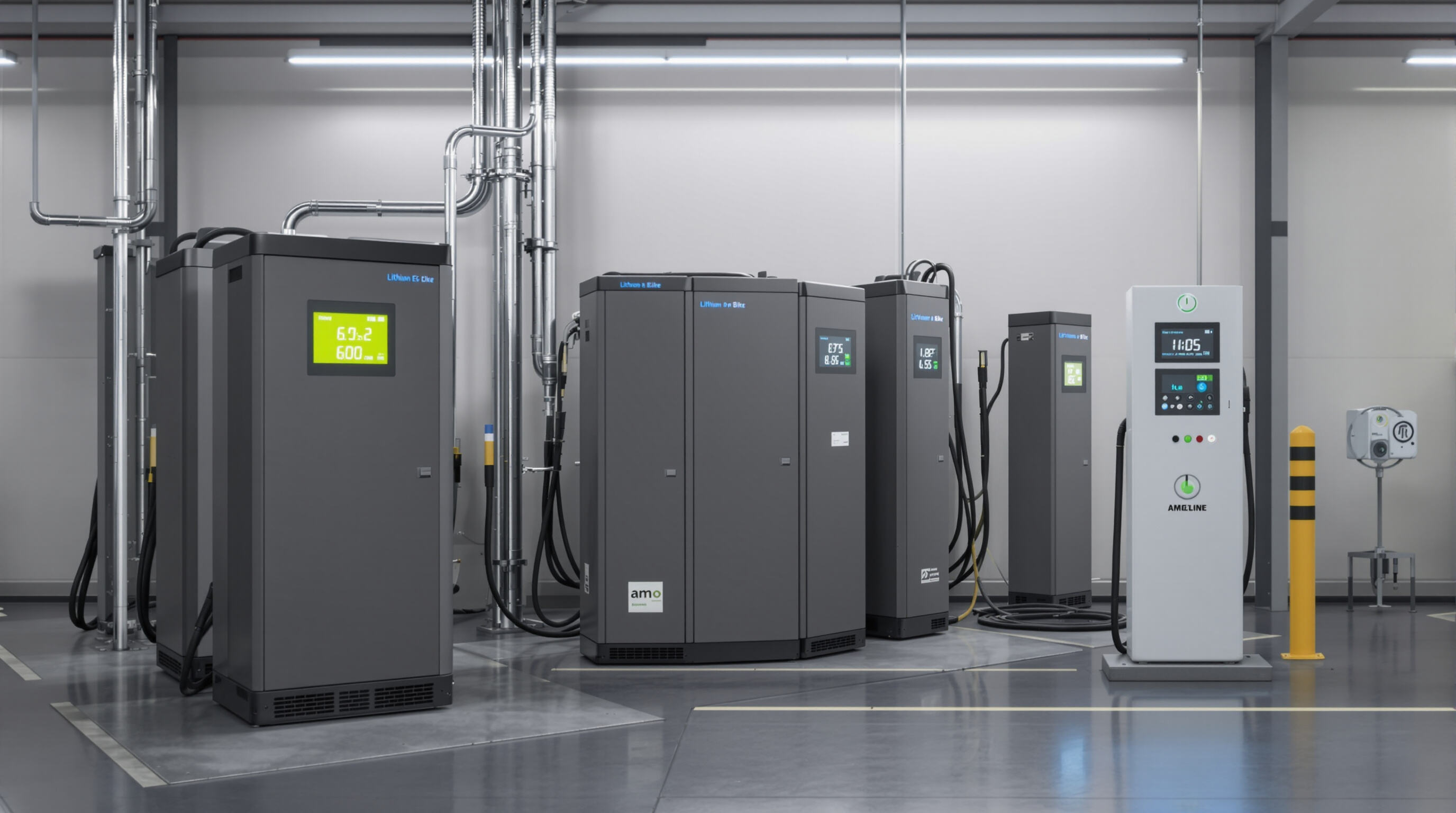The E Bike Battery Lifecycle comprises five critical phases in logistics:
These stages ensure battery integrity from import to end-user delivery, minimizing degradation risks through standardized handling and environmental controls.
The people who handle imports and manage warehouses keep things running smoothly by sticking to strict rules about how inventory is stored and handled. Rotating batteries every three months stops them from sitting around too long, which can actually speed up their degradation over time. Every quarter, they run tests to check battery capacity, making sure anything that drops below 95% doesn't get shipped out. Temperature control matters too. When moving batteries around, sudden temperature shifts need to stay under 12 degrees Celsius per hour to avoid damaging those delicate lithium ion cells inside. This careful approach helps protect both product quality and customer satisfaction in the long run.
Lithium-ion batteries in supply chain operations show a 35% shorter lifespan (8–12 months) compared to consumer-used counterparts (18–24 months), primarily due to frequent partial charge cycles and environmental stressors during storage.
| Lifespan Factor | Logistics Storage | Consumer Use |
|---|---|---|
| Average Cycles | 120–150 | 300–500 |
| Capacity Retention | 70–75% | 80–85% |
| Primary Degradation | Calendar aging | Cyclic stress |
This data highlights how logistics environments prioritize shelf stability over usage cycles, making proper charge and climate management essential.

Keeping lithium ion batteries around the 40 to 60 percent charge range actually helps reduce stress on those cathode materials inside and stops something called lithium plating from happening, which is one of the main reasons why these batteries lose their ability to hold power over time. When people leave their batteries constantly at full charge, the electrolyte tends to break down much faster too. Studies show that this breakdown happens about 2.3 times quicker at 100% than it does at 50%. The Department of Energy has some interesting data on this topic as well. Their research indicates that batteries kept at around half charge maintain roughly 94% of their original capacity after a whole year, while those left completely full only manage about 82%. These numbers really highlight why maintaining a moderate charge level makes such good sense for anyone wanting their battery to last longer.
To preserve battery health, avoid storing units below 20% charge (risk of deep discharge) or above 80% (increased degradation). A standardized 3-stage protocol improves consistency:
This approach aligns with manufacturer guidelines and reduces premature aging in warehouse inventories.
Require suppliers to ship batteries at 55±5% charge, supported by timestamped voltage logs. Third-party inspections should verify cell balancing within 0.03V variance, surface temperatures below 30°C/86°F, and secure terminal covers to prevent accidental discharge. These pre-arrival controls ensure batteries enter storage in optimal condition, reducing the need for reconditioning.
A 12-month warehouse simulation of 1,200 e-bike batteries revealed significant differences in degradation:
| Charge Level | Capacity Retention | Swelling Rate |
|---|---|---|
| 100% | 65% | 8.7mm |
| 50% | 88% | 2.1mm |
Batteries stored at full charge required replacement 35% earlier than those at 50%, confirming the operational and cost advantages of mid-range charge storage.

Exposure to temperature extremes accelerates lithium-ion battery degradation. The U.S. Department of Energy (2023) found that storage above 40°C (104°F) reduces lifespan by 30%, while freezing conditions below 0°C (32°F) cause permanent capacity loss of 15–20%. These conditions promote electrolyte decomposition and cathode cracking, compromising both performance and safety.
| Parameter | Ideal Range | Maximum Variation | Consequences of Deviation |
|---|---|---|---|
| Temperature | 15–25°C (59–77°F) | ±5°C (±9°F) | 2% monthly capacity loss at 30°C |
| Relative Humidity | 40–60% RH | ±10% | Corrosion risk above 70% RH |
The IEC 62619 standard requires HVAC systems that maintain these ranges with less than 1°C hourly fluctuation to prevent condensation and thermal stress.
Adequate airflow (minimum 0.5 m/s) prevents localized heat buildup and gas accumulation. Perforated shelving with 8–10 cm clearance between pallets improves air circulation, reducing overheating risk by 67% compared to solid racks. Proper warehouse layout also includes UV protection and isolation from flammable materials to minimize external exposure risks.
Distribution centers in the EU and North America are increasingly adopting dedicated climate zones for battery storage, featuring redundant cooling systems and real-time monitoring. These zones ensure compliance with IEC 62619 and address tightening regulatory demands, particularly for long-term inventory storage.
Lithium ion batteries can actually run hot during long term storage, particularly if they've been damaged somehow, aren't balanced properly, or just get too warm. According to some recent data from the industry back in 2024, around 28 out of every 100 warehouse battery problems happen while these batteries are sitting in storage, sometimes getting so hot they reach temperatures above 1000 degrees Fahrenheit. There are several main things that tend to cause these issues. First off, physical damage often happens when batteries aren't stacked correctly in storage areas. Then there's the problem with voltage imbalance in batteries that haven't been fully charged. And finally, we need to watch out for environments where the temperature goes beyond 30 degrees Celsius, which is about 86 degrees Fahrenheit on the Fahrenheit scale. These conditions together create a real fire hazard situation for anyone storing these batteries.
The National Fire Protection Association (NFPA) 855 standard mandates fireproof cabinets capable of withstanding 1,700°F for at least two hours—critical for containing thermal runaway. Key specifications include:
| Requirement | NFPA 855 Specification |
|---|---|
| Fire containment duration | ≥ 2 hours |
| Max batteries per cabinet | 50 kWh |
| Ventilation | Negative pressure HVAC |
Third-party testing confirms compliant containers reduce fire spread risk by 82% compared to standard shelving.
At a warehouse in New Jersey where they stored around 4800 e-bike batteries all charged to about 95%, a single damaged battery sparked a chain reaction that set off neighboring units, causing over $4.7 million worth of damage. The investigation team found several safety issues including wood shelves that didn't meet fire codes, smoke detectors missing from nearly half the storage areas, and no proper fire barriers between sections. Looking deeper into things, experts believe if those batteries had been kept under 60% charge instead, the whole mess might have waited another seventeen minutes before catching fire. That extra window would have given workers precious time to respond before everything went up in flames.
Modern facilities use VESDA air-sampling detectors, which identify smoke 35% faster than conventional systems, paired with lithium-specific suppression agents like FireAde 2000. A comprehensive 3-layer protection strategy includes:
Facilities conducting monthly fire drills reduce emergency response times by 44% compared to those with quarterly training, according to Federal Emergency Management Agency benchmarks.
Proactive detection of compromised units prevents cascading failures. Upon arrival, inspect batteries for swelling, leaks, or casing damage and perform voltage checks to identify cells below 2.5V. Immediately isolate flagged units in fireproof containers with at least 1-meter separation from healthy inventory, following NFPA 855 spacing guidelines.
Weekly monitoring of voltage (3.2–4.2V/cell), temperature (-5°C to +35°C), and state-of-charge (40–60%) reduces degradation risks by 62% compared to monthly checks (DOE 2023). Bluetooth-enabled testers allow rapid batch scanning of 50+ batteries per hour, supporting compliance with IEC 62619 and enabling early intervention.
Cloud-based platforms integrated with IoT sensors deliver real-time alerts for thermal runaway precursors (+5°C/minute rise), voltage drift beyond ±0.2V, and humidity spikes above 60% RH. These systems reduce manual monitoring costs by 73% and enable predictive maintenance, improving both safety and inventory longevity.
A dynamic FIFO (First-In, First-Out) system weighted by health metrics optimizes dispatch priority:
| Rotation Factor | Priority Threshold | Action Required |
|---|---|---|
| Storage Duration | >90 days | Expedite shipment |
| Capacity Loss | ≥15% | Recondition cycle |
| Self-Discharge Rate | >5%/month | Quality testing |
This hybrid model extends average battery lifecycle by 8–12 months compared to static storage, ensuring higher quality delivery and reduced waste.
The key stages are arrival inspection, charge stabilization, controlled storage, order fulfillment, and decommissioning. These stages ensure battery integrity from import to delivery.
Maintaining a 40-60% charge reduces stress on the battery's cathode materials and prevents lithium plating, thus extending the battery's lifespan.
Temperature extremes can accelerate battery degradation. Storage above 40°C reduces lifespan, while freezing conditions cause permanent capacity loss.
Fire safety protocols include using fireproof cabinets, adhering to NFPA 855 standards, and employing air-sampling detectors and lithium-specific suppression agents.
 Hot News
Hot News
© Copyright 2024 Shenzhen New Image technology Co., Ltd All Rights Reserved Privacy policy